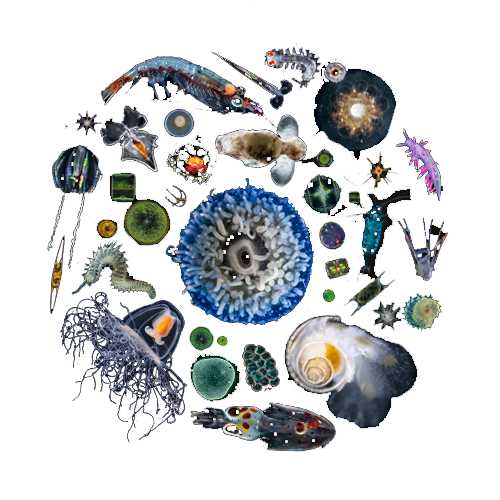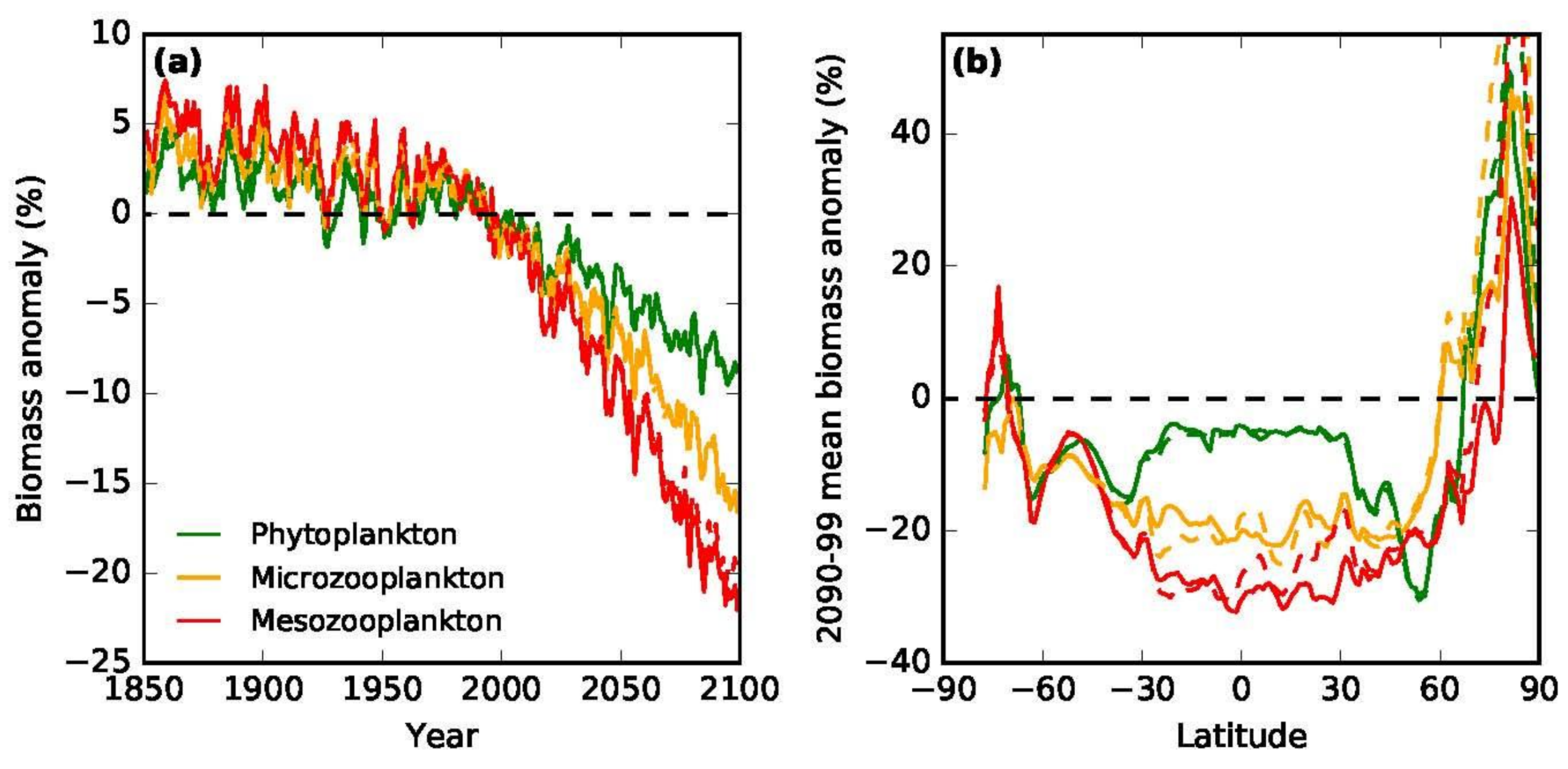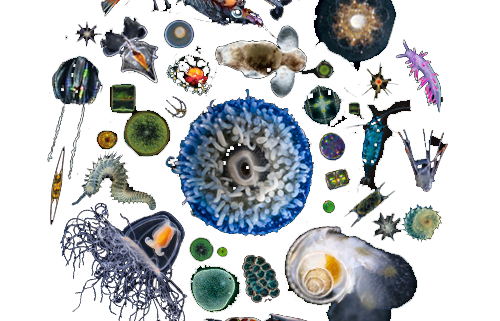Climate Change Induced Trophic Amplification Declines Planktonic Biomass
By: Delaney Reynolds, SRC Intern

Figure 1: A collage of different planktonic organisms (Source: http://planktonchronicles.org/en/episode/plankton/)
Plankton, including phytoplankton and zooplankton, make up 99% of all marine life and form the base of the food web. Phytoplankton undergo photosynthesis, much like plants do, and thus their growth and population size are dependent on availability of nutrients and levels of light. Zooplankton feed upon phytoplankton and thus their population size is partly dependent on phytoplankton populations.
The effects of anthropogenic climate change on phytoplankton and zooplankton populations is widely unknown, but scientists are taking steps to determine what those effects may be.
In a study by the Dynamic Meteorology Laboratory in France, Dr. Lester Kwiatowski took a look at how the trophic amplification of plankton biomass changes based on different models of future climate change, as well as how an amplification of this response may trickle through the food web.
Two different modeling techniques were used in this study: the Coupled Model Intercomparison Project Phase 5 (CMIP5) Earth System Models and the Pelagic Interactions Scheme for Carbon and Ecosystem Studies Quota (PISCES-QUOTA) model. The CMIP5 models modeled the trophic interactions between zooplankton and phytoplankton biomass under twenty-first century climate change projections. The PISCES-QUOTA model was used to explore what the mechanisms controlling zooplankton and phytoplankton trophic interactions might be under different climatic conditions.

Figure 2: This figure displays the projected percentage of plankton biomass anomaly by year from 1850 to 2100, as well as according to latitude. All three populations of plankton (phytoplankton, microzooplankton, and mesozooplankton) decrease in biomass; however, it can be concluded that the zooplankton will be much more negatively affected than the phytoplankton. It can also be deduced that in the lower latitudes, where it is warmer, zooplankton will also be more negatively affected than phytoplankton (Lester et al. 2018).
Kwiatowski found that both models projected a decline in both in zooplankton biomass and phytoplankton biomass as a result of climate change, with a moderately larger decrease in zooplankton biomass than phytoplankton biomass. According to the CMIP5 models, phytoplankton biomass is expected to decline by 6.1 ± 2.5% and zooplankton biomass is expected to decline by 13.6 ± 3.0%. The PISCES-QUOTA model split up zooplankton into two groups: microzooplankton and mesozooplankton. This model found that phytoplankton biomass is expected to decline by 8.5%, microzooplankton biomass by 15.4%, and mesozooplankton biomass by 20.6%. Here again, a slightly greater decrease in zooplankton biomass can be found than phytoplankton biomass. The PISCES-QUOTA model also determined that the driving factor affecting the biomass levels was primarily the fact that “primary production decreases in equatorial and subtropical biomes due to stratification-driven reductions in nutrient availability” (Kwiatowski et al., 2018).
Looking at comparisons between carbon, nitrogen, and phosphorous stoichiometry, the discrepancy between phytoplankton and zooplankton can be explained. As a result of climate change, the PISCES-QUOTA model also predicted a decrease in the phytoplankton nitrogen content by 1.1% and phosphorous content by 6.4%, just in the twenty-first century. As zooplankton consume phytoplankton, this decrease of nitrogen and phosphorous in phytoplankton will ultimately lead to a decline in the growth efficiency of zooplankton and a decrease in the overall zooplankton population.
Phytoplankton and zooplankton comprise of the base of the marine food web and also produce about 50% of the earth’s oxygen. Without them, many larger organisms would be heavily impacted. Studies just like this one can help us better understand the future that our delicate food web may face under the threats of climate change and give us insight into how we might be able to combat the probable effects.
Works Cited
Kwiatkowski, L., Aumont, O., & Bopp, L. (2019). Consistent trophic amplification of marine biomass declines under climate change. Global change biology, 25(1), 218-229.



